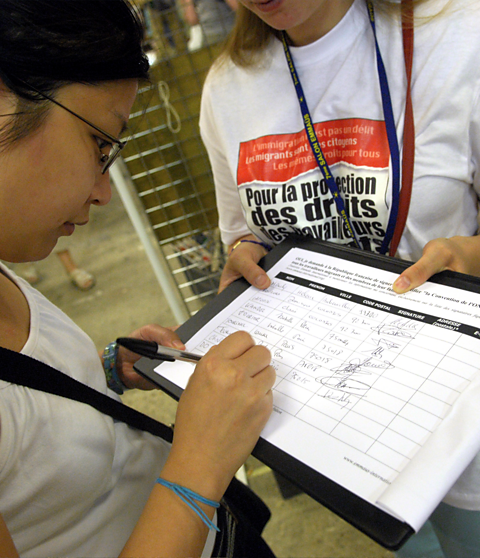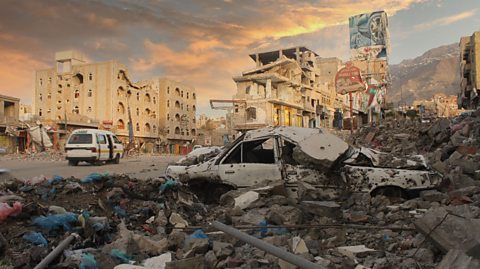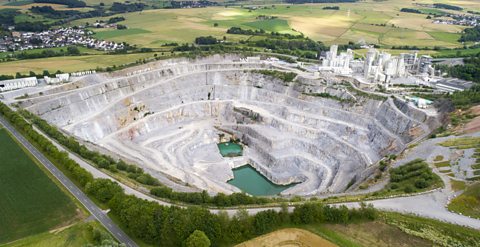What do you know?
What is a conflict?
A conflict is a serious disagreement between individuals, groups of people or countries.
Key points
- Conflict can occur when groups of people are competing for the use of the same space or piece of land.
- The physical environment can often be the cause of conflict.
- Conflict often has an impact on the environment.
What is conflict?

When geographers talk about conflictA serious disagreement between individuals or groups of people. It can range from a minor disagreement to a war., they are talking about different groups of people with competing interests fighting over a spaceA geographical area. This could be at a local scale such as a field or at a global scale where it could be a country.. They may be competing for control of the space, the resourcesSomething of value due to its usefulness such as food, water or raw materials. in the space or how that space is used.
Conflict may take the form of a polite disagreement, such as a letter in a newspaper or a petitionA document signed by a lot of people which asks a government or other official group to do a particular thing., or something more violent, such as an armed uprisingWhere a group of people fight against those who are in power in their country. or war.

Conflict can also occur at a number of different scales, from local to global.
| Scale | Example |
|---|---|
| local | A disagreement over the choice of sea defence for a coastal village. |
| regional | Groups of people with different opinions over the building of a new reservoir. |
| national | A civil war over the political control of a country. |
| international | A political or armed conflict over the control of a territory. |
| global | Disagreement between nations over environmental issues such as how to deal with the threat of climate change. |
Question
At what scales can conflict occur?
Conflict can occur at a number of different scales: local, regional, national, international and global.
The impact of conflict
Conflict has an impact on other areas of geography. For example, war or conflict can lead to environmental destruction, such as by the use of chemical or nuclear weapons or through attacks on oil facilities which can lead to the pollution of large areas of land. Destruction of crops and water supplies can lead to food shortages.
Conflict can also impact on the development of a country by committing valuable resources to the war effortAll that is being done to win a war. rather than focussing on improvement to infrastructureThe parts of the built environment needed for a country to function such as roads, water pipes and ports. .

The geography of conflict
As well as conflictA serious disagreement between individuals or groups of people. It can range from a minor disagreement to a war. affecting geography, geography can influence conflict. For example, the control of certain resourcesSomething of value due to its usefulness such as food, water or raw materials. in an area may lead to war. This could be for control of energy resources, such as the role oil was said to have played in the Iraq war, or water resources as was the case in Darfur, in Western Sudan, Africa in 2003.
The conflict in Darfur is known as the ’first climate change’ conflict as one of the causes of the war in Darfur was a conflict over control of water resources between nomadicAnything that involves moving from place to place eg nomadic hunter-gatherer tribes follow the animals they hunt, carrying their belongings with them. livestockFarm animals kept for profit such as cows, sheep or goats. herders and permanently settled farmers who farmed the land.
climateThe average (weather) conditions of an area. change has led to an increase in droughtA long period of low rainfall. and desertificationWhen fertile land becomes desert. meaning that these supplies were becoming more scarce. An estimated 480,000 people died in the conflict and 2.8 million people became refugees.

Geography can also influence the outcome of a war. For example, large mountain ranges can offer wide views over the landscape and the defensive advantage of being on high ground. A river might protect a country from attack as insurgentsA person fighting against a government or invading force. or armyAn organised military force equipped for fighting on land. are forced to wade across rivers, use boats or construct bridges leaving them open to attack. Wooded areas may also make it easier to hide and more difficult for the enemy to use large vehicles such as tanks.
Even climate might provide a strategic advantage for a country's success in conflict. Rain may make the ground soft, causing those on the attack to get stuck or slowed down. Harsh, cold winters, have often been thought responsible for a country’s success in defending itself against invaders, as is the case in Afghanistan. During the winter months, temperatures in Afghanistan can drop to below freezing and snowfall often makes large parts of the country inaccessible. This means that the movement of troops and supplies can be difficult.

Question
Conflict over which resource is thought to have been one of the causes of the war in Darfur?
Conflict over water resources is often said to have been one of the causes of the conflict in Darfur.
Current conflicts
This section was written in July 2022.
International conflicts may arise between nations due to disagreements over who controls land or resources.There may also be disputes which occur as a result of a political argument or over rights to control territories.
Current conflicts include:
Ukraine – Ukraine was invaded by its neighbour Russia in February 2022. There has been conflict between the two countries since 2014, when Russia invaded and took control of the Crimean peninsula, which is a part of Ukraine. Relationships between Russia and its neighbouring countries have been complex since the USSR collapsed in 1991. At least 12 million people have fled their homes in Ukraine in 2022 (United Nations figures correct in July 2022).
Syria – Since an uprising began in 2011, there has been a civil war in Syria. It started when Syrian citizens began protesting against high unemployment, hyperinflationWhen prices rise slightly, this is known as inflation. Hyperinflation is when prices are rising out of control, so money becomes worthless., corruption and a lack of political freedom. Many foreign countries have since supplied arms and aid to the various factions fighting the civil war.
Yemen – The president of Yemen fled the country in 2014 when Houthi Shia Muslim rebels took control of the capital Sanaa. Since 2015 Saudi Arabia and eight other mostly Sunni Arab states have conducted air strikes against the Houthis, with the aim of restoring the government. It is estimated that 74 per cent of the population of Yemen are in need of humanitarian assistance.

Conflict can slow down a country's rate of development This means that many citizens may suffer due to a lack of investment in their healthcare, education and infrastructure.
Test your knowledge
Play the Planet Planners game! gamePlay the Planet Planners game!
Make decisions for the planet in this KS3 geography game.

More on Environment, resources and conflict
Find out more by working through a topic
- count1 of 9

- count2 of 9

- count3 of 9

- count4 of 9
